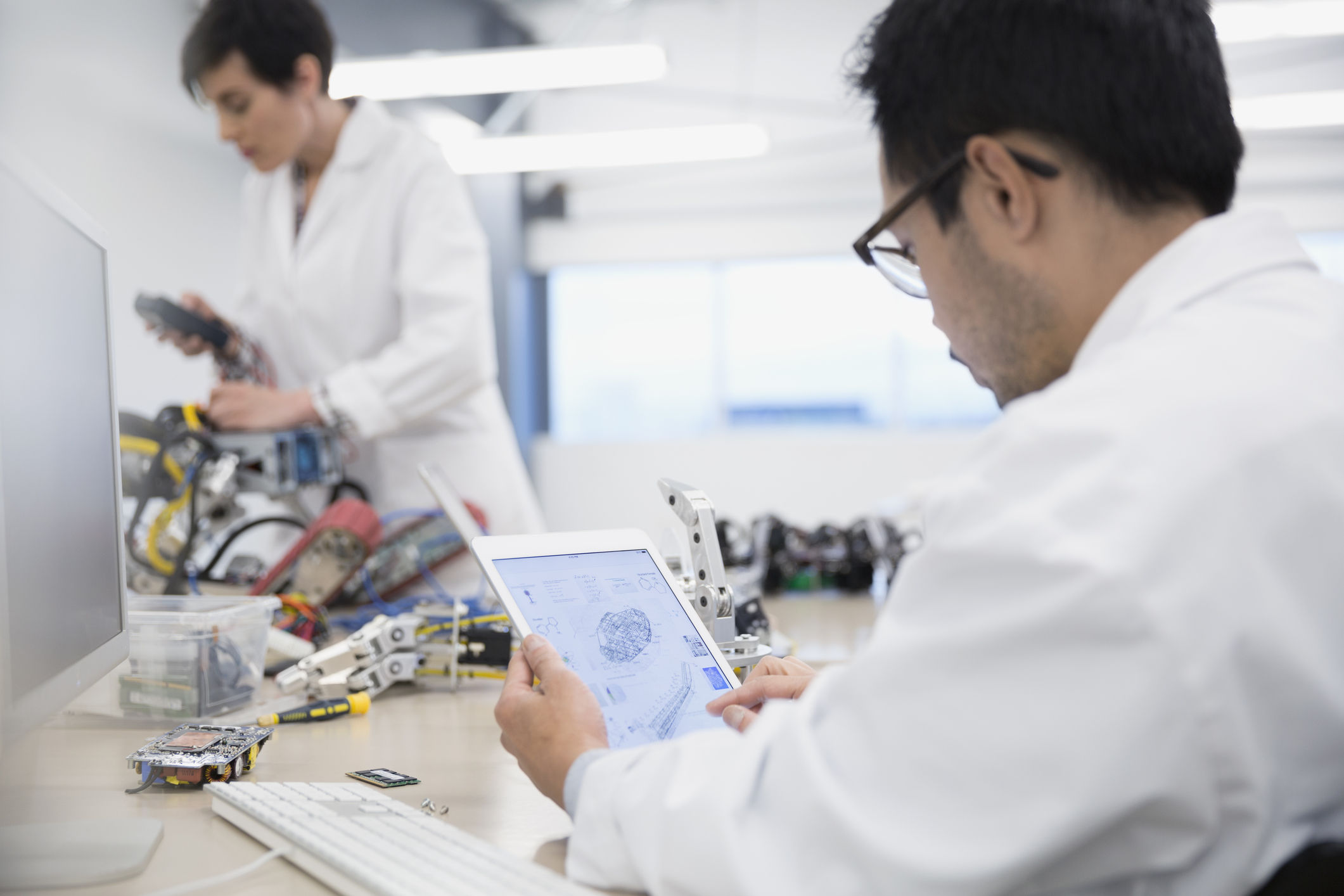Over the past few years I’ve watched artificial intelligence develop from a niche concern to a topic that regularly features in the national press. But while some people believe it could unlock a new golden age for humanity, and others – like Stephen Hawking – think that it could spell our doom, you rarely hear much about a fusion of AI and HI, in which humans train the AIs.
By that I don’t just mean the data scientists and programmers who work in this field. I mean the ordinary people who tackle the tasks that AI’s aren’t equipped to handle, thereby helping to improve them.
Microsoft’s Dr. Hsiao-Wuen Hon likens this combination of man and machine to the two parts of a brain. He claims that computers are “the best-ever left brain” for logic and rationality, while humans form “the best-ever right brain” for creativity, judgment and wisdom. Together, they form the ideal kind of intelligence, which he expresses as the following equation: Artificial Intelligence (AI) + human intelligence (HI) = intelligence, or augmented intelligence. However, I believe this formula could be tweaked to more accurately describe the potential of AI + HI: Artificial intelligence (AI) + Human intelligence (HI) = (collective) intelligence (amplified) or super intelligence.
Initially, the human side of this equation will teach the AI element, because just like us AIs need time to learn. Without guidance they can’t make sense of all the data we throw at them. And the quickest and most effective way of training an AI is through the crowd economy.
Novel and challenging tasks help the algorithms we call artificial intelligence (which is really machine learning) improve faster and deliver better results. Unlike people algorithms don’t have an ego, so if they’re not confident of performing a certain task correctly, they’ll happily inform a human handler – at which point the crowd economy comes into play.
Let me give you an example. Mechanical Turk is often described as “artificial intelligence”, as it uses a small army of workers to carry out paid micro-tasks like matching information in photographs – which machines traditionally aren’t very good at. But this is changing as the machines get smarter. Mechanical Turk workers increasingly check the work of algorithms, rather than filling in the gaps for them. For instance, Amazon (which owns the Mechanical Turk platform) recently paid workers to check whether its algorithm had correctly identified duplicate retail products on its shopping website.
Read: Could running a side project make you happier?
The people helping to train the machines are often highly educated: a recent study from the Pew Research Center found that one in two Turkers has a college degree, compared with a third of the US workforce overall. Although the pay per task is often low, they enjoy flexibility in terms of when they work, and where. But some have found that the platform offers few means of dealing with taskmasters who treat them unfairly – a situation that Turkopticon, a tool lets you browse other workers’ reviews of employers and contribute your own, is trying to address.
A number of start-ups have also been quick to capitalise on the need to train AI systems. Mighty AI, for instance, uses the power of the crowd to gather information from experts who’re happy to answer questions in exchange for cash. They’ve already worked with major corporations like IBM, who wanted to create a chatbot for spectators at the 2016 Masters Golf Tournament. They sent Mighty AI reams of information on golf, and Mighty AI searched its 100,000-strong group of specialists, spread across 155 countries, in order to find people who were familiar with the game. These individuals tagged certain elements of the material provided by IBM and used it to compose questions. The result? A chatbot that could talk about golf like a pro (or close enough).
CrowdFlower also provides access to a workforce of millions of people who can clean up messy or incomplete data. Their customers are typically data scientists who want to create training data for their algorithms. Workers on the platform connect with them through online job boards that list the type of task and how much it pays. These tasks can include analysing the sentiment of tweets on a brand or hashtag, scoring relevance for search queries or moderating user generated content.
One UK company is even attempting to use AI and the power of the crowd to brew the perfect beer. IntelligentX has created four different types of beer, which people feedback on to a Facebook Messenger chatbot. The company’s algorithm – called Automated Brewing Intelligence (ABI) – uses this information to tweak the recipe before the next batch is brewed.
Meanwhile, Numerai is using AI and the power of the crowd to trade stocks. Specialist technology masks the fund’s trading data before sharing with anonymous data scientists, who then build machine learning models to analyse it and improve Numerai’s trading predictions. The data scientists – who number in the thousands – are paid in bitcoin. Numerai has already paid out the equivalent of $150,000 so far, and claims that if the fund reaches over a billion dollars under management, it could pay out over $1 million each month to its crowdsourced team.
What does this all mean for the future of AI? I believe it shows that while concerns about jobs being lost to machines are valid, new types of roles are also beginning to emerge in the crowd economy – something I hope you’ll remember the next time you see a headline about ‘robots stealing our jobs’!
Join me at the CSW Summit Arctic Circle, 15-19 March, to hear more from expert speakers on the opportunities, challenges and future of the crowd economy.







0 Comments